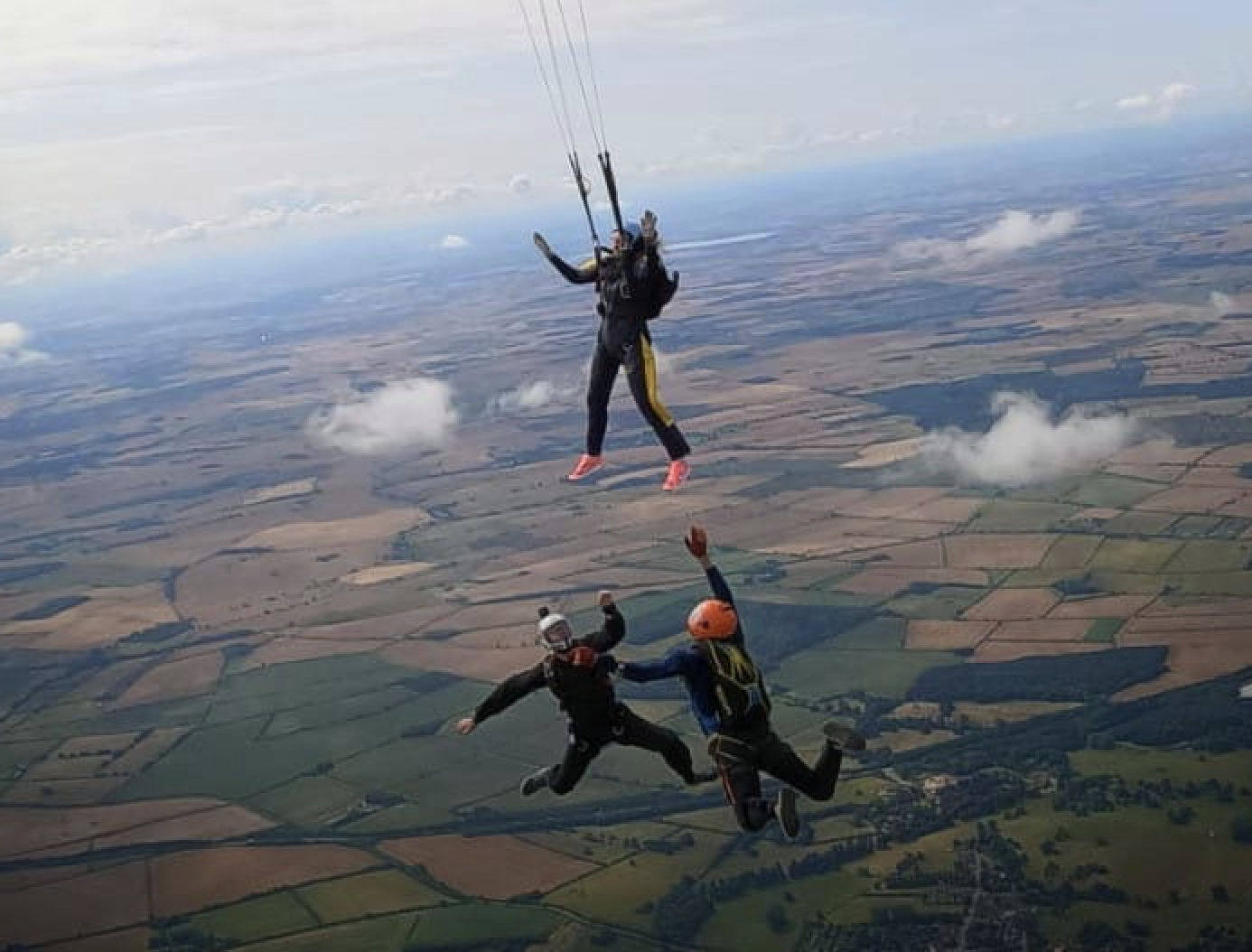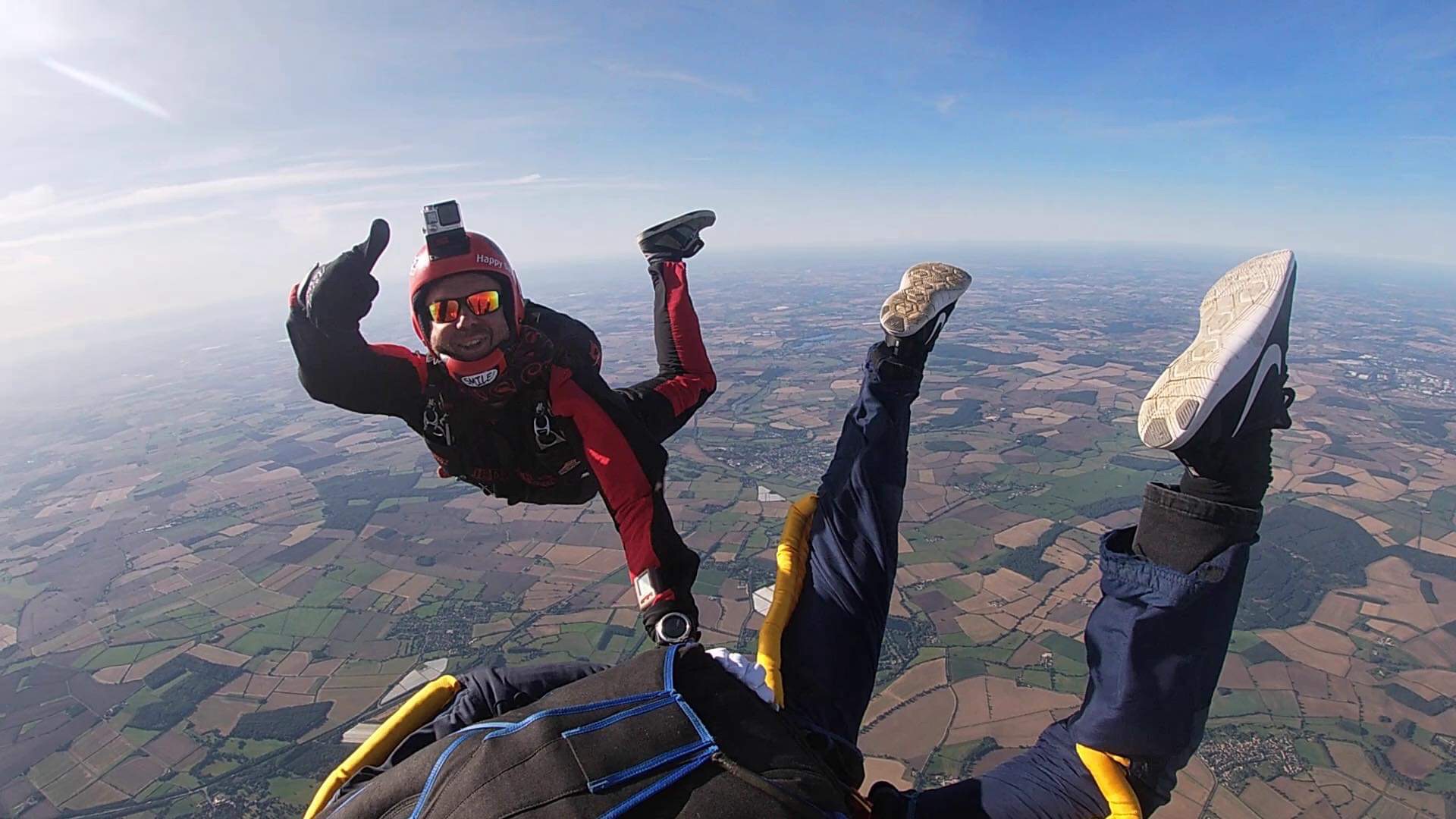
The Day CYPRES Saved My Life… with Ged Parker
Friday, September 6, 2024
- Joel Strickland
- 9/06/24
- 0
- Saves
STEP BY STEP
The jump in question was an AFF level three, and everything was all good. This was the student’s first go at this level and up to this point, things had gone smoothly. We had completed his ground school two or three weeks previously, he is a smart guy and a similar age to me – so both in our mid-fifties.
Exiting the aircraft was all fine, with me on the outside as the secondary instructor. The primary gave me the nod to indicate I was good to move away, and I did so to a suitable distance allowing for space but also still quite close. The primary instructor was confident that the student was stable enough that he could also release his grips. As he did so, a left turn developed that started slowly but accelerated aggressively to become extremely quick.

I must have had three attempts to get in and stop the spin. At one point I was able to catch his head and slow him a little bit, but I couldn’t reach any of his handles. By the time he is completely upside down spinning on his back, I am chasing him down and giving the signal to pull all the time. I knew it was getting closer and closer, that I should be out of there by 3000ft – but I kept giving him the signal to deploy.

At a certain point, there is nothing you can do to aid the situation. I had followed the AFF procedures and he had received the proper training. We had gone over what to do in this situation and I could no longer try to stop him. At around 1500ft I reach around to deploy, noticing as I feel my canopy come out that he has had an AAD fire. I then felt my reserve closing loop release and my reserve inflate next to my main.
My immediate reaction was that I might land on the A1 – which is a very busy 70mph dual carriageway (highway). I needed to do something, so I pulled a bit of left toggle to get away from the road, but as I did so I felt the canopies separate slightly. I was literally drifting very low across a main road, thinking I hope I make it because although my canopies are flying there is not much you should do with a biplane or it might deteriorate into a downplane.
I made it just over the traffic and a hedge, then landed actually pretty well with a PLF. I was quite shocked but immediately called back to dropzone control. I always have my phone with me and the appropriate number to call should something occur. We all know that these things can happen, but it wasn’t a particularly pleasant experience.

THOUGHTS
I know that I should have got out of there earlier and that we have a hard deck for these jumps for good reasons. In hindsight, maybe if I had deployed earlier he might have seen it and registered the need to act. My instructor has pulled, maybe I should pull too.
In the AFF programme, the in-air emergencies change at level three – basically when you start being let go of. If you cannot see your instructors but are stable, you continue with the skydive until 6000ft then lock on, arch and deploy. If you are unable to see your altitude and are unaware and out of control – you should deploy. In the final visible frames on the video, you can see the student go to his handles to fix the problem – it is just a bit late for both of us to avoid the CYPRES activation.

The other instructor pulled at a normal height, electing higher up that I was closer and had priority to help the student. This is of course the right thing to do, as if there is a misunderstanding and both try to sort something out it can easily get messy. You can see in the video that the student looks so stable, it can be hard to believe that they can go into a turn that speeds up so quickly. Afterwards, my student said he just felt like he was in a tumble dryer. I guess he just froze with it, which is something we hope we won’t do in a situatiuon like that, but is quite understandable.
Looking back at it from a couple of weeks later, I feel proud that my instinct is to help the student no matter what. Sure, the outcome was not the desired version of events, but we are both fine. It takes a little time to properly absorb something like that, and while he has not been back to the dropzone as of yet, I am confident he will continue. I have followed up on the phone a couple of times and am due to do so again. It is nice to have a chat about it and get go though the details as a shared experience. Being an AFF instructor is a massive responsibility, and with all students, you go over and over thinking about the process of getting everything right. I am sure that with a bit of a gap to let things settle, we can brief it up and get it done.

ANYTHING ELSE?
I was using borrowed equipment that day. I’d had a malfunction with my personal gear on the previous jump, which while not ideal is a routine part of skydiving. There had been a little gap, but not for any reason other than some weather days. My own canopies are fairly small, being a 109 main and 106 reserve. Instead of accepting the offer of borrowed gear that is slightly smaller than what I am used to, I chose a set of kit significantly larger – which looking back may have made an important difference in how things played out. With two malfunctions in a row, the appropriate banter was of course that when gearing up for my first jump back, everyone wanted to know if I was going for the hat-trick.
Adventure, Tips, and Adrenaline
Subscribe to Our Newsletter
By signing up for our newsletter you declare to agree with our privacy policy.

